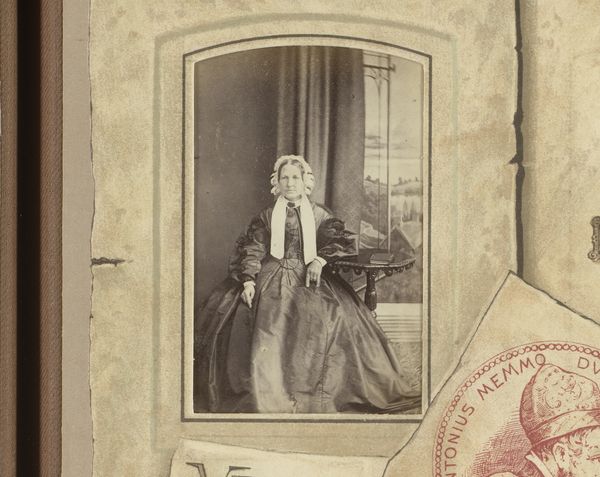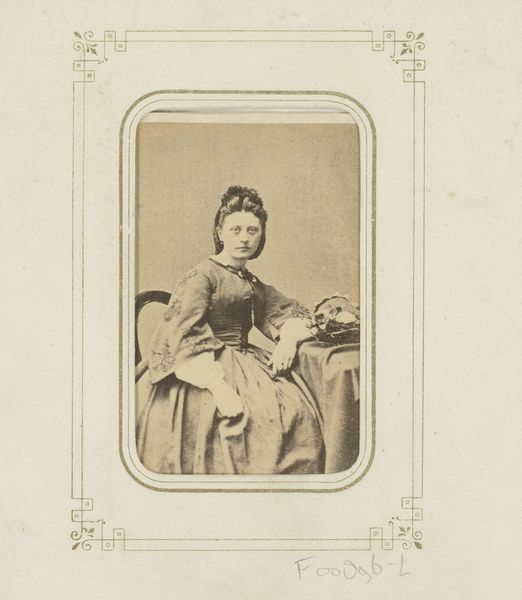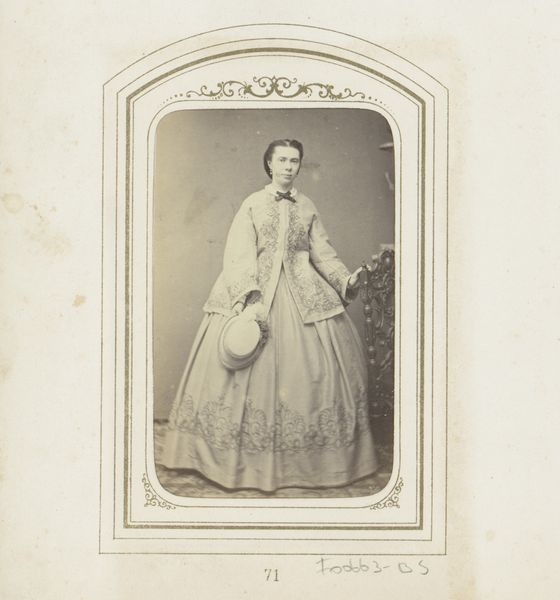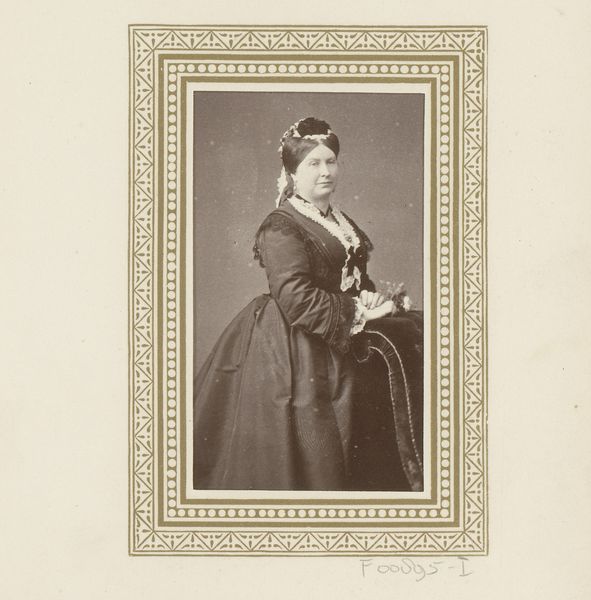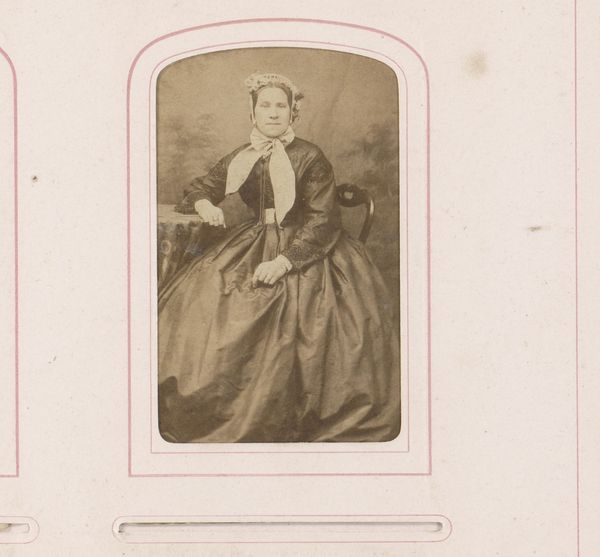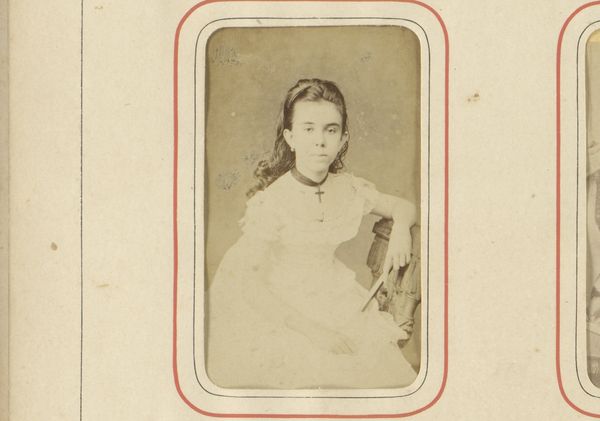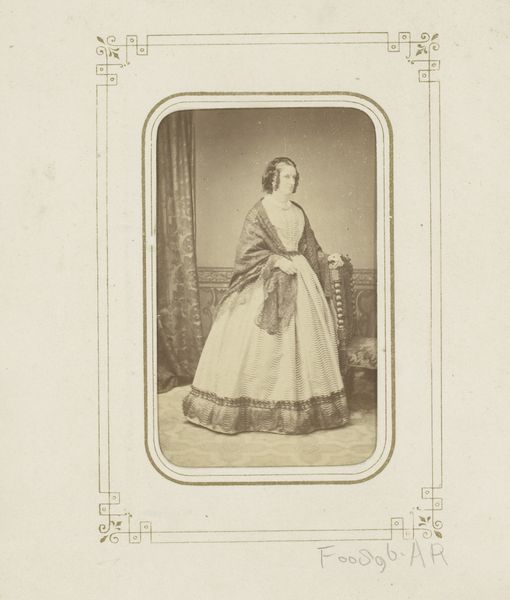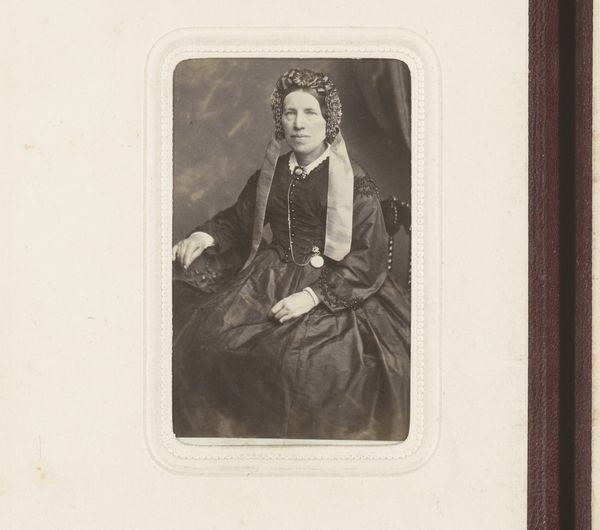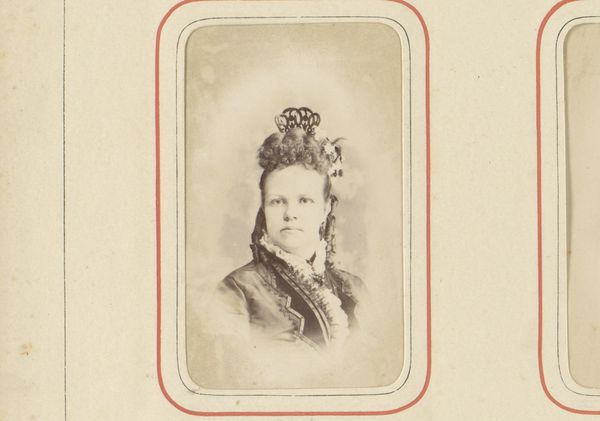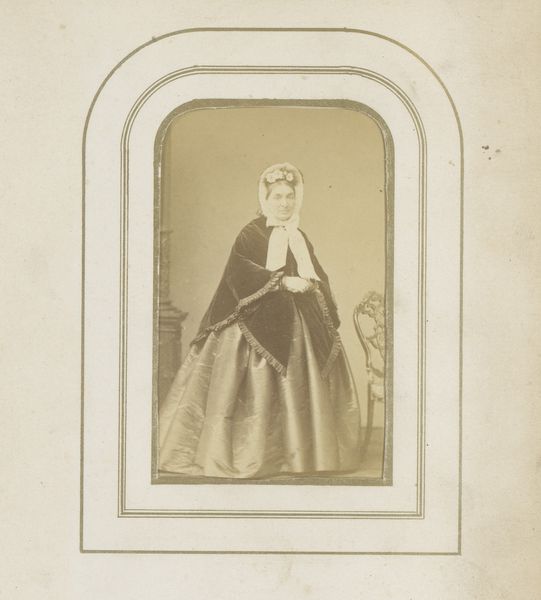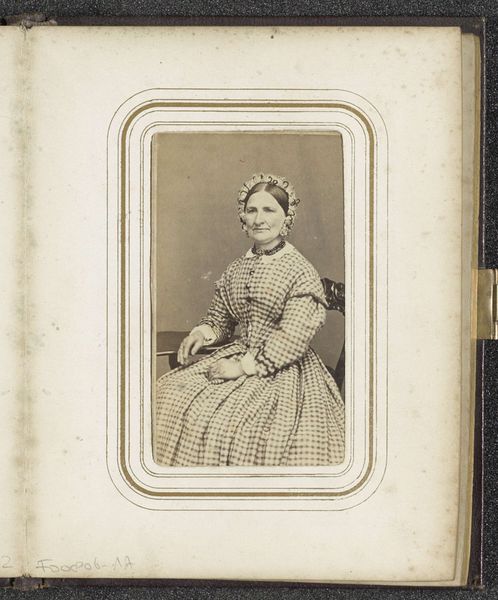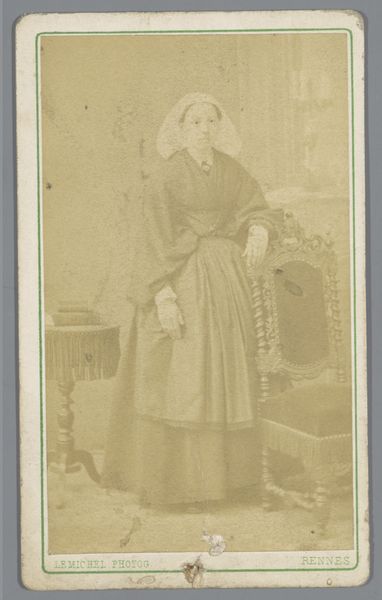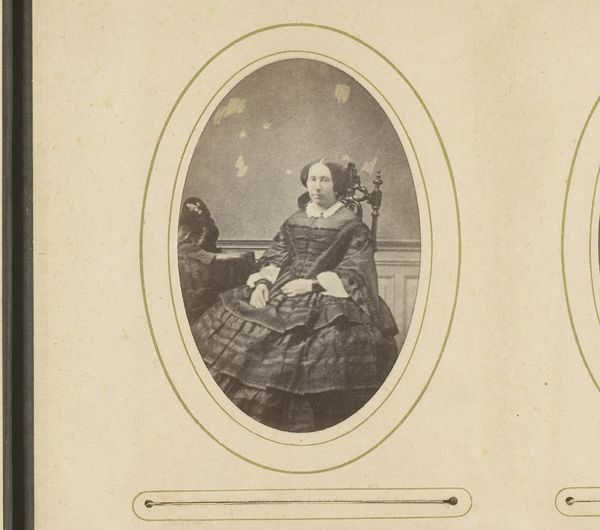
photography, albumen-print
#
portrait
#
photography
#
albumen-print
Dimensions: height 264 mm, width 194 mm, height 82 mm, width 51 mm
Copyright: Rijks Museum: Open Domain
Curator: What a pensive study. The work is titled "Portret van een vrouw," or "Portrait of a Woman," created sometime between 1860 and 1900 by Charles Neve. It’s an albumen print, which was quite popular during that period. Editor: The sepia tones create such a wistful atmosphere. The framing emphasizes the subject's pose, the soft light really highlighting her features. Her gaze holds a certain… detachment. Curator: Indeed. Albumen prints were produced through a fascinating, if labour-intensive, process. Egg whites were used to bind the photographic chemicals to the paper. The artist or technician had to control many variables to obtain a lasting image. This was often repetitive and subject to the conditions present in their immediate environs. Editor: The striped garment draws my eye, especially contrasted with the ornate lace. Notice how the lines subtly curve with her form, guiding the viewer's attention. This is very deliberate in design terms. Curator: The dress tells its own story of manufacture, perhaps even of commerce and distribution of materials at the time this portrait was conceived. Mass produced materials were widely available, impacting representation through the class background indicated by the sitters garment. How that interacts with a more laborious craft like photography adds a complicated narrative layer to this piece. Editor: That contrast between what seems like readily accessible print medium for photography with this carefully chosen garment is very provocative. The pose almost evokes classic portraiture but the materiality and construction of the image make it unique to its period. Curator: By understanding these photographic processes we’re able to examine Victorian society and consider the rise of the middle classes. Photography became a way for those not historically captured in paint, such as middle classes, to represent themselves. It's fascinating to reflect how accessibility impacted art. Editor: Reflecting on form and context here is key. The subject’s wistful gaze takes on greater depth considering all you’ve pointed out, adding new significance to a relatively simple image. Curator: Yes, understanding these elements can greatly enrich our understanding and relationship to the image. Editor: Absolutely, and in turn that impacts our emotional engagement with an old portrait like this one.
Comments
No comments
Be the first to comment and join the conversation on the ultimate creative platform.

